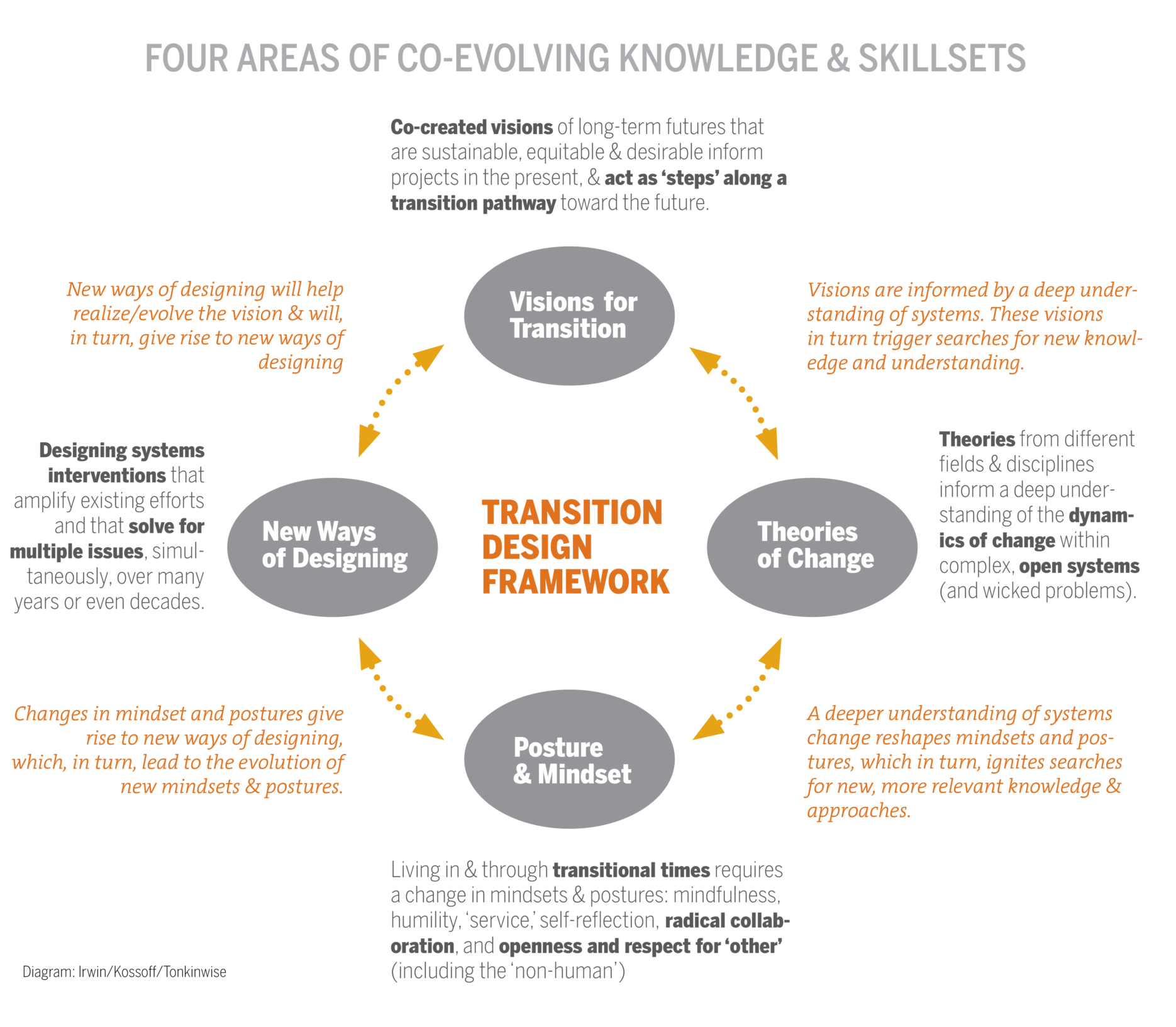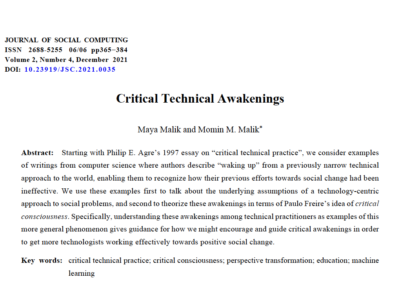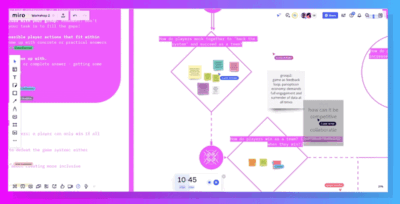“The Transition Design Framework provides a logic for bringing together the transdisciplinary knowledge, skillsets and practices relevant to understanding, seeding and catalyzing systems level change. It is comprised of four key mutually reinforcing and co-evolving areas of practices, knowledge and skill sets relevant to understanding, seeding and catalyzing systems-level change:
Vision: because we need to have clear visions of what we want to transition toward
Theories of Change: because we need a variety of theories and methodologies that explain the dynamics of change within complex systems
Mindset and Posture: because we will need to develop postures of open, collaboration and self-reflection in order to undertake this work
New Ways of Designing: which will arise out of the previous three areas “
“Transition design is distinct from service design or social innovation design in its deep grounding in future-oriented visions, its transdisciplinary imperative, its objective to initiate and direct change within social and natural systems and designers’ heightened awareness of the temporality: solutions are intentionally conceived within short, mid-term or long horizons of time.” (https://transitiondesignseminarcmu.net/the-transition-design-framework/#1607385187283-b7ee2674-018b)




